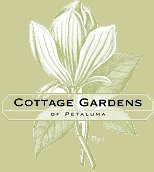
Pears
Growing Pears Successfully
Planting • Dig hole at least one foot greater in diameter than the total spread of roots the depth of the longest root. • Fill in lower 2 inches of hole with mixture of 50% native soil and a 50% mix of Soil Booster and 1-2 cups of Earthworm Castings. Press this mixture down firmly. Create a mound in the center of the hole with the soil mixture. Set tree upright in hole with stem in center. • Spread out roots as evenly as possible over the mound of soil and back-fill mixture around all roots. Fill in hole completely, adding 1 cup fertilizer at this time, using either E.B. Stone Sure Start or E.B. Stone Citrus and Fruit Tree Food.• Make a basin for holding water by building a circular ridge around the diameter of the hole and fill slowly with water. The water will settle the soil around the roots. • The graft should be positioned about 2 inches above ground level, facing north.
Watering • Water when the soil 6 inches below the surface is just barely moist. • Apply enough water to wet the soil 3 to 4 feet deep. • Mature trees will require less watering, but should still get regular water during summer. Mulch with Microbark is beneficial, helping conserve moisture and keeping down weeds.
Feeding • Feed three to four times during the growing season with a balanced fertilizer (16-16-16) such as E.B. Stone All Purpose Plant Food or E.B. Stone Citrus and Fruit Tree Food. • Avoid fertilizers too high in nitrogen as they will stimulate leafy growth at the expense of fruit production. • It is not necessary to fertilize during the dormant season.
Pruning: The success of any deciduous fruit tree depends a great deal upon the initial training it receives the first three years. These instructions apply to all deciduous fruit trees except pecans and walnuts.
1 st Year • Cut off the main leader or central stem 30” from the ground. If there are any lateral (side) branches make the cut 30” above a good strong lateral branch. • Select two other lateral branches, one about 8” below the top branch, the other 16” below. • Make your selection of these branches so that when you look down the tree from directly above, the three branches spiral equally. By selecting branches spaced in this manner, the tree will develop a crotch that is less apt to split in later years. • Head back any remaining branches to one-half of their original length. • As the tree grows, allow only 2 buds on each branch to develop; one at the end and one halfway between the end and the base. Let these branches grow to their full development without further summer pruning and rub off any shoots that may appear on the trunk as suckers.
2nd Year • Choose six well developed branches and cut back about two-thirds of their length. Cut just above a strong bud or lateral branch. • Head back all other lateral branches to one-half of their length.
3-5 years • Continue to prune in pyramidical or modified leader style, in which widely angled branches are encouraged to grow in spiral placement around the trunk. Avoid allowing narrow-angled crotches to develop. • Don't worry about fruit production for the first 4-5 years. Prune to develop strong, evenly spaced branches. • To prune mature trees, remove dead, diseased and disoriented wood, especially those growing in towards the center of the tree. Keep the center open to light and air circulation. • Pears produce fruit on spurs, which are formed on the lower portion of branches that are at least one year old. They can be recognized by their thick, stubby appearance. The spurs produce blossoms and fruit year after year and should be saved whenever possible.
Pests and Diseases • Codling Moth eggs develop into worms that feed on the fruit. Use pheromone traps during the growing season. Hang the traps about 10 feet from the tree and monitor carefully. During high levels of infestation, spray your tree with Green Light Lawn & Garden Spray with Spinosad, or Summit Year Round Spray Oil. Place traps at mid-bloom and again when the pears are just forming. Thoroughly spray with Dormant or Year Round Spray 1-3 times during dormant season to suffocate pupae. Hand pick cocoons tucked away during the winter. In spring, after petal fall, spray on contact with BT (Bacillus thuringiensis) to eliminate the caterpillars. Repeat 2-3 times two to three weeks apart. • Scab appears as dark brown corky lesions. Unless severely affected, pears are edible. To prevent recurrence, remove and destroy leaf debris and infected fruit in the fall. The following spring, spray with Microcop at bud break. • Fireblight is a bacteria that is most severe during warm, wet weather. Prune out and destroy infected parts at least 12” beyond visible decay. Disinfect pruners after each cut. The following spring, apply Serendade or Liquicop soon after bud-break.
Click HERE to return to our Fruit page.